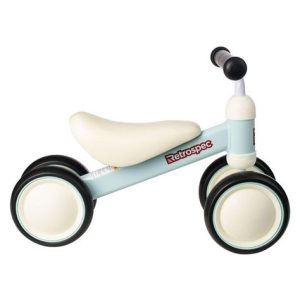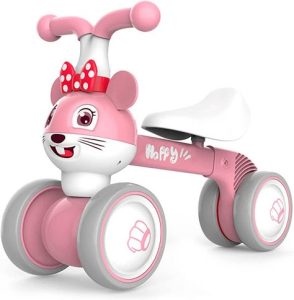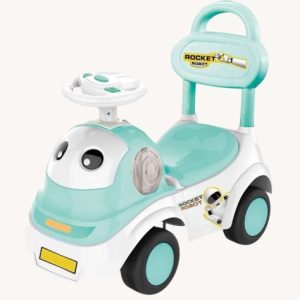Baby riding toys are a fantastic way to encourage development through play. From push cars to tricycles, these toys can help your child improve their motor skills, balance, coordination, and spatial awareness. But with so many options available, choosing the right riding toy can feel overwhelming.
This article will serve as your guide to navigating the world of baby riding toys. We’ll explore different types of riding toys, safety considerations, and age-appropriate recommendations to help you find the perfect ride for your little one.
The Power of Play: Benefits of Baby Riding Toys
Baby riding toys offer a multitude of benefits that go beyond just entertainment. Here’s a glimpse into what your child can gain from these fun-filled rides:
-
Motor skills development: Pushing, scooting, and steering a riding toy helps strengthen your child’s gross motor skills, which are essential for coordination and movement.
-
Balance and coordination: Balancing on a riding toy and maneuvering it around obstacles helps develop balance and coordination skills.
-
Spatial awareness: Riding toys allow your child to explore their surroundings and understand spatial relationships, like forward, backward, left, and right.
-
Problem-solving skills: Navigating a riding toy around objects or figuring out how to push it themselves encourages problem-solving skills.
-
Active play: Riding toys get your child moving, promoting healthy activity habits and burning off energy.

Types of Baby Riding Toys: Variety is the Spice of Play!
The world of baby riding toys offers something for every child’s age and developmental stage. Here’s a breakdown of some popular categories:
Push ride-on toys:
These floor toys are great for younger babies who are just learning to walk. They typically have a sturdy base and a handle for your child to push themselves around.
Scooters:
Scooters introduce the concept of balancing on two wheels. Start with a stable, three-wheeled scooter for younger toddlers and graduate to a two-wheeled scooter as they develop their balancing skills.
Tricycles:
Tricycles are a classic choice that helps refine balancing and pedaling skills. Look for tricycles with features like removable parental handles and adjustable seats to grow with your child.
Ride-on cars and animals:
These battery-powered or foot-powered toys provide endless fun and imaginative play. They come in a variety of shapes, sizes, and characters to capture your child’s interest.
Selecting the Right Ride: Considering Age and Development
Here’s a general guide to choosing a baby riding toy based on your child’s age group:
-
6-12 months: Look for push ride-on toys with easy-to-grip handles and a stable base. These toys encourage your baby to explore their surroundings and strengthen their leg muscles.
-
12-18 months: Scooters and stationary ride-on toys with activity features are great options. Scooters help develop balance, while stationary ride-on toys with buttons and levers promote hand-eye coordination.
-
18-24 months: This is the prime tricycle time! Look for tricycles with a parental handle for guidance and adjustable seats for comfort.
-
2-3 years: As your child’s balance and coordination improve, they can graduate to ride-on cars and animals. Battery-powered options can add an element of excitement, while foot-powered cars encourage physical activity.

Safety First: Gearing Up for Fun
Safety is paramount when it comes to baby riding toys. Here are some key safety tips to keep in mind:
-
Always supervise your child: Never leave your child unattended while using a riding toy.
-
Choose the right size: The toy should be age-appropriate and sized correctly for your child. Their feet should be able to touch the ground comfortably when seated.
-
Helmet time: Even for slow-moving rides, a properly fitted helmet is essential to protect your child’s head in case of falls.
-
Protective gear: Consider elbow and knee pads for added protection, especially for scooters and tricycles.
Ride on smooth surfaces: Avoid using riding toys on uneven terrain or rough surfaces that could cause bumps or tipovers.
Beyond the Ride: Encouraging Active Play
Riding toys are a launchpad for active play and exploration. Here are some ways to extend the fun and learning:
-
Take it outside: Explore parks, sidewalks, or your backyard for a change of scenery and fresh air. Sunshine exposure (with sunscreen!) is important for vitamin D production in children.
-
Make it a race: Create a safe race track with cones or bubbles to add a playful challenge (remember, participation is key!). This can help your child learn about taking turns and following rules.
-
Obstacle course: Set up an obstacle course using pillows, blankets, and tunnels for your child to navigate with their riding toy. This is a fun way to encourage problem-solving skills and spatial awareness.
-
Get creative: Riding toys can spark imaginative play. Let your child pretend they’re delivering mail on their scooter or going on a safari adventure with their animal ride-on.
-
Sing songs and tell stories: Make up songs about riding toys or tell stories about their adventures. This can help develop your child’s language skills and memory.
Baby riding toys offer a perfect blend of fun and developmental benefits. By choosing the right toy for your child’s age and stage, and prioritizing safety, you can create lasting memories and encourage a love for active play. So buckle up, or push off, and get ready for a ride filled with laughter, learning, and exploration!

Maintaining the Ride: Keeping Your Toys in Top Shape
Baby riding toys can provide hours of fun, but a little maintenance goes a long way in ensuring their longevity and safety. Here are some tips:
-
Regular cleaning: Wipe down your child’s riding toy with a damp cloth and mild soap solution to remove dirt and grime. This is especially important after outdoor play.
-
Store them safely: When not in use, store riding toys indoors or in a protected area to avoid sun damage or rust.
-
Check for wear and tear: Regularly inspect the toy for loose parts, cracks, or worn-out wheels. Replace any damaged components to ensure safety.
-
Keep it lubricated (optional): For riding toys with moving parts, a few drops of lubricant on hinges or wheels can ensure smooth operation. Refer to the manufacturer’s instructions for specific lubrication recommendations.

Sharing the Ride: Fun for Siblings and Friends
Baby riding toys can be even more enjoyable when shared with siblings or friends. Here are some ideas for fostering playtime fun:
-
Take turns: Teach your child the importance of sharing by taking turns riding the toy.
-
Play together: If the riding toy is big enough, siblings can ride together or pretend they’re on a journey.
-
Teamwork time: For stationary ride-on toys with multiple seats, children can work together to make the toy move or play pretend together.
-
Organize playdates: Invite friends over for playdates that involve riding toys. This is a great way for children to socialize and develop communication skills.
